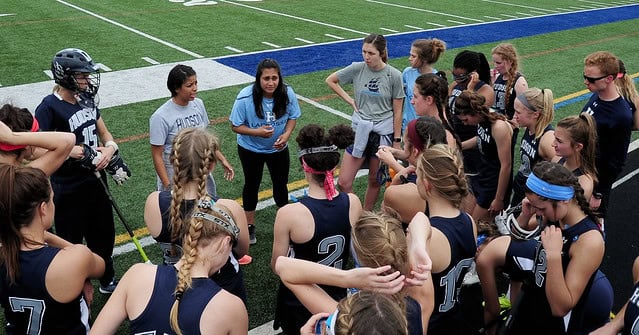Positive Athlete Behavior Starts with Rethinking Practice, Not the Player
08.12.25

By Suzanne Sillett
When I first started coaching, I was fresh out of my collegiate soccer career and eager to keep the game a part of my life. I loved being on the field with high school athletes who were full of energy, chasing their goals, building friendships, and enjoying the game. What I learned early on is that the more I prepared, the smoother the practice unfolded. Even now, many seasons later, there is nothing more satisfying as a coach than planning and running a session that is effective, efficient, fun, and keeps athletes motivated and growing.
Creating smooth, engaging sessions that keep athletes focused starts with how we approach behavior. In youth sports, conversations about behavior often focus on addressing problems like athletes not paying attention during team talks, losing focus while waiting their turn, or conflict with teammates. However, to truly set athletes up for success, we need to take a proactive approach—examining the environment we create and recognizing how our coaching style influences behavior from the outset.
One of the greatest tools coaches have is the ability to intentionally shape practices and team environments that encourage positive behavior. The goal is clear: help athletes stay engaged, focused, learning, and performing at their best. Here are three strategies to support athletes doing just that.
1. Safety and Belonging Matter
The more our athletes feel safe, seen, heard, and supported, the more likely they are to fully engage, participate positively, and stay motivated. Belonging isn’t just a nice addition — it’s a core part of supporting positive behavior.
Here are a few simple ways coaches can create belonging right from the start:
- Design inclusive practices: Make sure every athlete has a place and a role from the very beginning.
- Adapt your coaching to different learning styles: Use visual demonstrations, verbal explanations, and hands-on practice to reach all athletes.
- Invite participation: Give athletes chances to contribute, make choices, and take ownership in practice.
2. The Power of Routine
Routine supports positive behavior by creating structure, predictability, and a sense of security for athletes. When young people know what to expect — from how practice is organized to how transitions happen — they spend less mental energy worrying about the unknown. This predictability helps lower uncertainty, which is a common trigger for anxiety. Over time, consistent routines help athletes feel more confident, safe, and focused, allowing them to engage fully without the distraction of nervousness or doubt.
Here are a few simple ways to create routines that stick:
- Opening and closing circle – build safety, focus, and connection with a consistent structure at the beginning and end of practice. This lets athletes know what to expect, shift into practice mode, and then reflect and celebrate progress.
- Use attention getters and transitions – a consistent signal that helps athletes quickly regain focus and move between activities.
- Consistent tone – using a calm, steady, respectful tone, even when correcting, creates safety, trust and supports positive behavior.
3. Lead by Example
One of the most effective ways to encourage positive behavior from athletes is by modeling it yourself. As a coach, your actions and words set the tone for the entire team. Young people pay close attention to how adults handle challenges, communicate, and treat others — modeling positive behavior shows them what’s expected, builds trust, and reinforces a culture where everyone can stay engaged, focused, and growing.
- Stay calm under pressure – Use a reset cue like, tapping your fingers or clenching your fist, or come up with your own physical cue to help you regulate so you can model the behavior you want your athletes to see
- Communication – speak kindly to athletes, opponents, and officials. Be aware of non-verbal communication and its impact on others.
- Prioritize effort over outcome – praise hard work and growth, not just the wins and losses. This lets athletes know you care about their development, not just the result.
So, whether you’re early in your coaching journey or many seasons in, one thing remains true: when we lead with consistency, connection, and example, we lay the foundation for positive behavior and lasting impact.
Discover more and go deeper with PCA’s new workshop: Supporting Positive Athlete Behavior Through Responsive Coaching